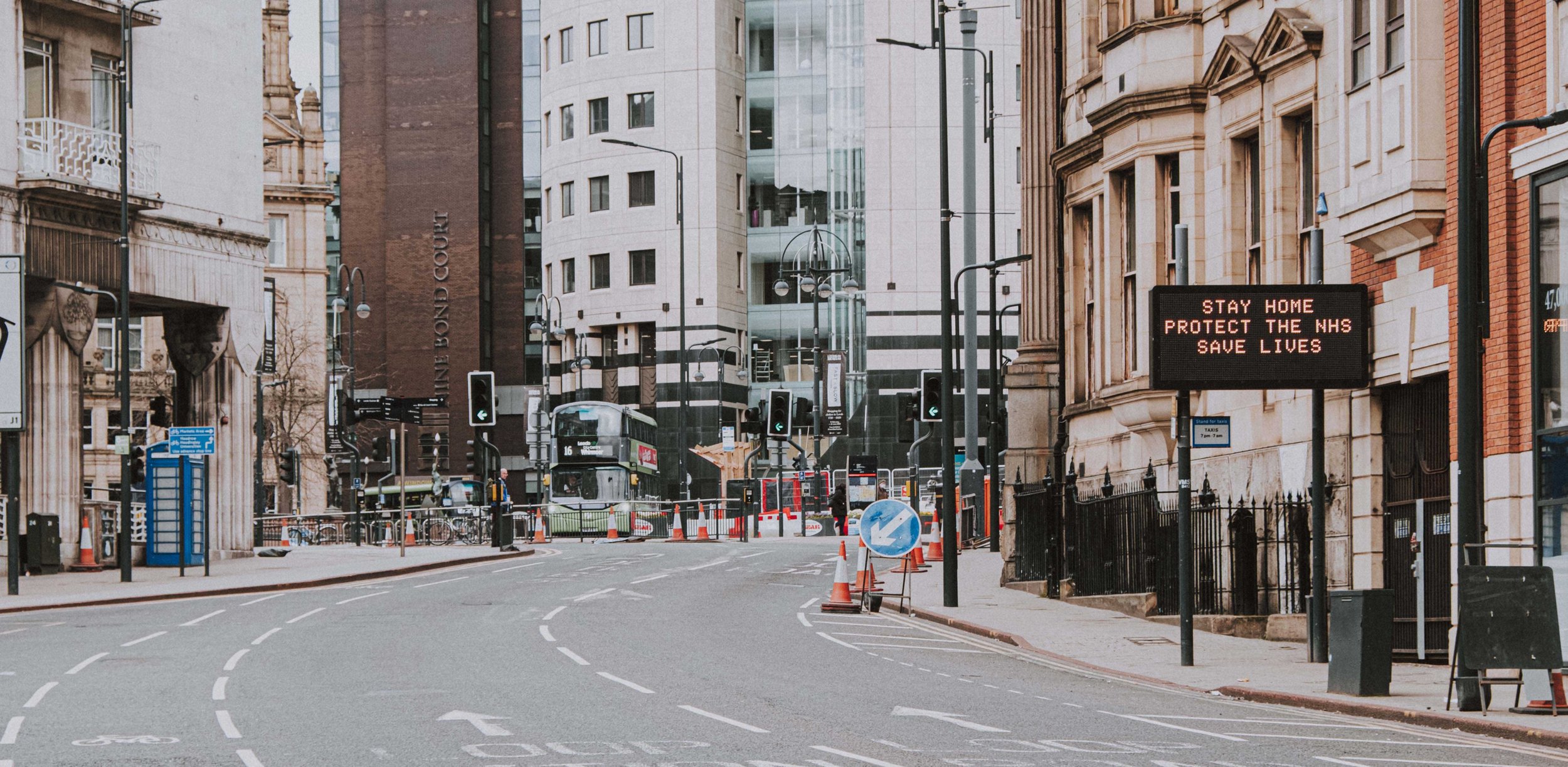Does the coronavirus combat climate change or accelerate it?
Cleantech struck by COVID-19 and cheapening oil prices will have a major impact on the future of energy
Mika Anttonen M.Sc.(Tech.) is the founder and principal shareholder of the energy company St1
FUTURE PROOF – BLOG BY FUTURES PLATFORM
In our article series, we zoom in on some specific areas and industries in the world that will emerge after the COVID-19 pandemic. This third instalment focuses on the future of energy after COVID-19. The article is based on an analysis by Futures Platform, with insight from the founder and chairman of energy company St1 and climate change advocate Mika Anttonen and Futures Platform’s Senior Foresight Analyst Max Stucki.
The megatrends mapping the future of cleantech as well as coal-based energy are well known and it is not an overstatement to say that what happens on that front will very largely determine the fate of humanity for decades, maybe even centuries to come. The global population has been constantly growing along with the average standard of living, meaning that more and more energy will be required to satisfy the needs of this population.
Simultaneously, society has become increasingly aware that the carbon emissions caused by fossil-based fuels are destroying the environment and threatening the stability of not just ecosystems worldwide but also societies. Climate change is already affecting many regions and countries in many ways, with some areas suffering from extreme weather phenomena, some losing crops or becoming infested with pests, and some others simply becoming too hot to live in.
This growing awareness has fuelled the development of cleantech. Cleantech is a broad term covering technologies and solutions that are environmentally friendly. They are usually either emission-free and designed to replace coal-based fuels or capable of removing carbon dioxide from the air.
Before the pandemic, was cleantech developing fast enough to stop climate change? Not according to St1 billionaire Mika Anttonen who has been very outspoken about the inadequacy of climate measures.
“Green economic growth is a beautiful lie, nothing more. If we genuinely want to lower carbon dioxide emissions with a population of this size, we need to lower our standard of living. Period.”
Furthermore, the world economy was anticipated to enter a downturn soon, which would lower oil prices, reducing cleantech’s competitiveness and potentially also decrease investments made in it.
According to Senior Analyst Max Stucki from Futures Platform, once the pandemic then unleashed itself upon the world, it soon became clear that it has a multitude of connections to energy production and climate change – an entity that isn’t entirely simple to unpack.
“To summarise, we could say that the key points where they connect are pollution and people’s health, coal-based energy and its link to financial growth, and the ability to strategically prepare for an impending natural disaster of an accelerating nature,” he describes.
“Green economic growth is a beautiful lie, nothing more. If we genuinely want to lower carbon dioxide emissions with a population of this size, we need to lower our standard of living.”
Does the coronavirus combat climate change?
Even though COVID-19 has only kept people inside for a short period of time, we already saw a positive impact on the environment in terms of air quality in many polluted countries, starting from China. Furthermore, pollution is linked to a higher death rate from COVID-19 and we know that loss of biodiversity increases the risk of pandemics.
Many countries have seen improvements in the air quality after imposing social distancing during the Coronavirus pandemic
Image: Empty street in Leeds during social distancing – Source: Dan Burton (Unsplash.com)
“In most places, pollution grew gradually and people got used to it. Now that it’s been halted abruptly and the immediate consequence is the air that is easier to breathe, it may feel unbearable to go back to the way it was – especially in the middle of a lung-infecting pandemic,” Max Stucki says.
In many countries, the necessity of social isolation has also sparked conversation around what are acceptable sacrifices for human health and what are not.
According to Max Stucki, this could remain as a temporary topic or lead to a more permanent value shift, strengthening the pre-pandemic trend of seeing healthcare not as curing illnesses but as a wholesome collection of solutions leading to a better quality of life.
The connection COVID-19 has with financial growth has to do with its cyclic connection with the oil price. Traditionally, oil is cheap during a recession, fuelling the economy. When the economy is growing, oil becomes more expensive again, paving the way for a new downturn.
“In most places, pollution grew gradually and people got used to it. Now that it’s been halted abruptly and the immediate consequence is the air that is easier to breathe, it may feel unbearable to go back to the way it was – especially in the middle of a lung-infecting pandemic. ”
One was already in the cards before the pandemic. Then, when the news of the virus broke out, Saudi Arabia wanted the oil-producing countries to jointly cut supply to control the prices when the pandemic would slash demand. Russia refused, leading to the Saudis initiating a price war by starting unprecedented overproduction. Oil price plummeted below zero.
“We know that the pandemic causes recession also entirely separately to the oil price, by restricting movement and trade as well as by making people afraid to consume and make investments,” Max Stucki says.
However, he believes the accelerated decline in oil price may temporarily help by boosting the struggling economy, especially if governments choose to prioritise short-term gains over long-term.
And finally, the pandemic teaches society many lessons that also apply to climate change and mass extinction. COVID-19’s unmitigated spreading curve is exponential. Humans are markedly unequipped to fathom the scale and progress of an exponential problem. As was witnessed for instance in Italy and Iran, the COVID-19 epidemic first seems to progress deceptively slowly, until – seemingly overnight – hospitals are filled with what can only be described as a tsunami of patients.
“Although climate change is a much slower-moving phenomenon, its progress is also on an exponential curve. Scientists talk about tipping points that can accelerate climate change much in the same way,” Max Stucki says.
This explains, at least in part, why the response to the climate threat has been inadequate and how dangerous the lack of action can eventually turn out to be.
On a more positive note, the COVID-19 pandemic has also demonstrated how suddenly people can change their behaviour and how fast governments can act when they feel so compelled.
“A stimulus package is a double-edged sword. A good idea as such, but if you shovel money into technologies such as solar or wind that are already mature enough for markets, you waste money and prevent the markets from working as they should.”
Future of energy after COVID-19
The COVID-19 pandemic is still far from resolved, so its true effects continue to take shape. According to Mika Anttonen, the oil price is likely to remain low for the next two to three years.“The aviation sector alone will take care of that, as it will take some time before it recovers. As long as the demand in that sector stays lower than pre-corona levels, so will the oil price.”This, in turn, will mean that renewable energy solutions will struggle more than before the pandemic to maintain competitive pricing. And this may slow down the energy transformation that is needed to prevent a climate catastrophe.
With oil price probably remains low after the pandemic, cleantech solutions will struggle more than before the pandemic to maintain competitive pricing
Image: Wind Turbines on a field – Source: Pexel.com
Mika Anttonen and Max Stucki agree that the key to solving this is how the stimulus packages and regulation of different countries and regions handle the energy question when directing funds to save the pandemic-stricken economy.
According to Mika Anttonen, any funds dedicated to cleantech after COVID-19 should be directed at supporting new research and development, such as synthetic fuels. St1’s key project of the sort, for instance, is “power to x” which uses renewable energy to combine CO2 and hydrogen from industrial sources and make synthetic methanol for fuel.
The mistake governments should not make is to fund feed-in tariffs for technologies that are already commercially viable.
“A stimulus package is a double-edged sword. A good idea as such, but if you shovel money into technologies such as solar or wind that are already mature enough for markets, you waste money and prevent the markets from working as they should. The feed-in tariff is only good for technologies that still need development to be commercially viable.”
Long term, he believes that the only way to really curb the use of fossil fuels is to put a price tag on coal.
“This doesn’t cost taxpayers any money. It is only about regulation.”
In practice, the best long-term option would be to establish a carbon exchange where emitters pay and those who reduce get paid. Ideally a global one, but the EU would be a start.
“As long as this hasn’t been achieved, the best short-term options are to reduce emission rights in the European Emissions Trading System or put taxes on carbon.”
“Sustainable travel was already an emerging trend so in the future, a combination of a prolonged period of instability, shifting values and changing human behaviour could be seen as an opportunity to reboot or transform the industry.”
In our weekly “The World After COVID-19” video series, futurist Marianna Mäki-Teeri argues that re-labelling environmentally-friendly solutions as human-friendly could help us battle climate change in the long term. “Actions to mitigate pollution are increasingly needed not only to save the environment but also to protect our health”, she says.
Circular economy after COVID-19
So, does the coronavirus combat climate change? When discussing this, it is always vital to understand the scale and timeline. If the pandemic drops global emissions by 5% this year, we still need to keep reducing emissions by that same 5% every single year until we will finally reach carbon neutrality in 2050.
Max Stucki believes that the pandemic could permanently reduce emissions in some specific industries most impacted by the pandemic, such as travel.
“Sustainable travel was already an emerging trend so, in the future, a combination of a prolonged period of instability, shifting values and changing human behaviour could be seen as an opportunity to reboot or transform the industry.”
Sustainable tourism is an industry committed to making a low impact on the environment and local culture.
Source: Annie Spratt (Unsplash.com)
Would something like this be enough? Mika Anttonen has a clear standing: stopping climate change is not possible within a global economy that seeks growth.
“As I mentioned, the only way to cut carbon use is to put a price on it. And the more it costs, the harder it will be to maintain economic growth.”
To summarise, when we will look back at the pandemic after some years or decades, we may end up realising that it had a positive impact on the environment, eventually. Not so much by temporarily lowering emissions but because it both increased awareness of how the risk of natural disasters is increasing and will not go away by ignoring it, and also by re-distributing funds within societies and sectors.
If done cleverly, the latter may facilitate a shift towards the circular economy after COVID-19 and more sustainable societies.
For that to happen, Max Stucki reminds, brave decisions would need to be made without immense pressure from a natural disaster.
Mika Anttonen M.Sc.(Tech.) is the founder and principal shareholder of the energy company St1. He began his career as a private entrepreneur in the fuel trade in 1996 and rapidly built up a diverse Nordic energy company which today pursues its vision to become a leading producer and seller of CO2-aware energy. The company is investing heavily in renewable energy research and production, ranging from industrial wind power to advanced biofuels and geothermal heat. Mika is currently Chairman of the Board at St1. www.st1.com
Max Stucki is the Foresight Analysis Manager at Futures Platform. He holds degrees in Master of Arts, Futures Studies and Master of Social Sciences at the University of Turku, Finland
If you want to take a comprehensive look at the impacts of the pandemic among other phenomena, check out Futures Platform.









Interest in personalised healthcare, mental health and holistic wellness regimens had been gaining traction steadily. With Covid-19 dramatically accelerating these pre-existing transitions, Futures Platform’s futurists anticipate that many of the pandemic-induced changes to the healthcare and wellness industries will be here to stay post-pandemic.